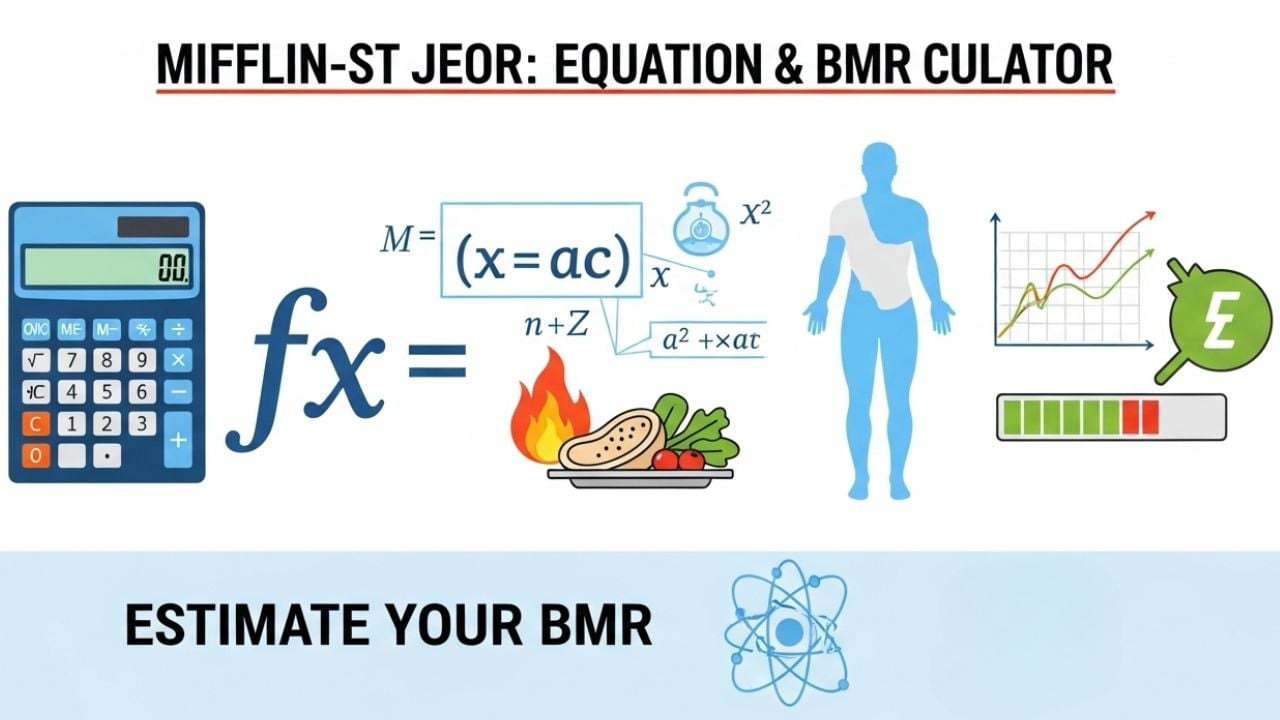Mifflin-St Jeor BMR Calculator

Mifflin-St Jeor Equation
Scientific Foundation
The Mifflin-St Jeor equation represents the pinnacle of metabolic rate prediction accuracy. Developed in 1990 through rigorous scientific research involving 498 healthy subjects, this equation has become the gold standard for BMR calculations in clinical and research settings worldwide.
Superior Accuracy
Clinical studies demonstrate that the Mifflin-St Jeor equation provides ±10% accuracy compared to indirect calorimetry, significantly outperforming other predictive equations like Harris-Benedict, which shows ±15% accuracy. This precision makes it the preferred choice for medical nutrition therapy.
Modern Validation
Recent 2024 research continues to validate the Mifflin-St Jeor equation’s accuracy across diverse populations, confirming its relevance in contemporary healthcare and fitness applications.
Mifflin-St Jeor Equation Formulas
Activity Level Guidelines
| Activity Level | Multiplier | Description | Exercise Frequency |
|---|---|---|---|
| Sedentary | 1.2 | Little to no exercise | 0-1 days/week |
| Light Activity | 1.375 | Light exercise or sports | 1-3 days/week |
| Moderate Activity | 1.55 | Moderate exercise or sports | 3-5 days/week |
| High Activity | 1.725 | Hard exercise or sports | 6-7 days/week |
| Very High Activity | 1.9 | Very hard exercise/physical job | Daily intense training |
Benefits of Accurate BMR Calculation
Weight Management
Precise caloric needs calculation for effective weight loss, maintenance, or gain strategies.
Fitness Planning
Optimize nutrition and training programs based on accurate metabolic rate assessments.
Nutrition Guidance
Create personalized meal plans with appropriate caloric and macronutrient distributions.
Health Monitoring
Track metabolic changes over time and adjust lifestyle interventions accordingly.
Frequently Asked Questions
What is the difference between BMR and TDEE?
BMR (Basal Metabolic Rate) is the energy required for basic body functions at rest, while TDEE (Total Daily Energy Expenditure) includes BMR plus calories burned through physical activity and exercise.
Why is the Mifflin-St Jeor equation more accurate?
The Mifflin-St Jeor equation was developed using a larger, more diverse population sample and has been validated against indirect calorimetry measurements, showing superior accuracy compared to older equations like Harris-Benedict.
How often should I recalculate my BMR?
Recalculate your BMR whenever there are significant changes in weight (±5 lbs), activity level, or every 3-6 months for ongoing health monitoring.
Can I use this calculator for weight loss planning?
Yes, our calculator provides weight management goals based on your TDEE. A deficit of 500 calories per day typically results in 1 pound of weight loss per week.
Metabolic Rate Optimization Tips
🏋️ Strength Training
Build lean muscle mass to increase your BMR, as muscle tissue burns more calories at rest than fat tissue.
🍽️ Protein Intake
Consume adequate protein (0.8-1.2g per kg body weight) to support muscle maintenance and boost thermic effect of food.
💤 Quality Sleep
Maintain 7-9 hours of quality sleep to support hormonal balance and optimal metabolic function.
💧 Stay Hydrated
Proper hydration supports metabolic processes and can temporarily increase energy expenditure.
Scientific Research & Validation
Original Study (1990)
Mifflin et al. conducted the landmark study that established this equation using 498 healthy adults aged 19-78 years. The research demonstrated superior accuracy compared to existing equations, with R² = 0.71 for the prediction model.
Systematic Review Evidence
Frankenfield et al. conducted a comprehensive systematic review comparing predictive equations for resting metabolic rate. The Mifflin-St Jeor equation showed the most accurate predictions in both healthy and obese adults.
Clinical Applications
The equation is widely adopted in clinical settings for medical nutrition therapy, weight management programs, and sports nutrition applications due to its proven accuracy and reliability across diverse populations.
Important Disclaimer
This calculator provides estimates based on the Mifflin-St Jeor equation and should not replace professional medical advice. Individual metabolic rates can vary due to genetics, medical conditions, medications, and other factors. Consult with healthcare professionals for personalized nutrition and fitness guidance, especially if you have medical conditions or are taking medications that may affect metabolism.
